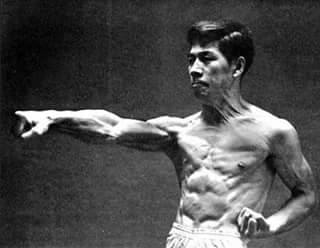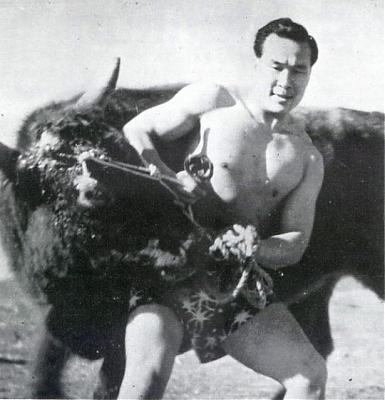A guest blog post by my friend, Jarell Lindsey from Lean Functional Muscle.
Martial Arts Training for Mobility
The martial arts are diluted today. There are maxims and philosophies of how to dictate one’s life, and emphasis on the aspect of skill over strength, and not needing to be stronger than your opponent to claim victory. After all, there’s always someone stronger than you, right?
This is the most enabling psychology in the martial arts world today. The simple fact that someone out in the world is stronger than you is enough to fully discourage you from pursuing strength? Martial arts training is about more than that; traditional martial artists of yore weren’t only the most skillful at their arts; they were some of the most physically fit people you could ever encounter. If you look at the physiques of Sosai Oyama, Kanazawa Sensei, so on and so forth, these men had bodies made to fight. After all, TMA’s were designed to prepare fighters for war, not philosophy class.
How, then, does one begin such a pursuit for the physical fitness of the traditional martial arts warrior? Well there are two aspects that are fundamental to the physiology of every human: mobility and stability. Simple enough, let’s look at mobility here.
How Well Can You Move?
How well around can you move? No really, how efficiently can your body move as a unit? Perhaps you have a heavy squat, but can your butt reach the ground without the weight? In fact, most people have two vertebrae in their thoracic spines that all but fuse together, simply because we never make use of that full spinal mobility. If you want full physical preparation for any situation, ability to move your body in any given position should be a priority.
And the way to train mobility is not through intensity. I almost repeated that sentence for its importance; plyometric style programs may develop your explosive power, but is not the key to true mobility. In fact, I was taught that if you want to truly develop speed and control in a movement, practice it slowly. The difference is made with the tendons.
Intensity will be important for muscle training and stability, which I will cover in the next article, but variation and repetition has a precedence in mobility training. Tendons need high reps and consistency for proper development; the explosive movements, while helping the nerves in your muscle fire quicker, threaten the structural integrity of your tendons and ligaments. When practicing mobility slowly, the movements become ingrained into your body, and your connective tissues can develop alongside your nerves and muscles. Practicing those movements consistently over years is how gungfu is developed.
But for full mobility, variation is needed. Practice the basic, necessary movements daily over time, but when you can, add a variation to the movement you perform. Perhaps practice your squat with a posterior pelvic tilt to open the hips more. Maybe practice bringing your scapula further forward when you punch. Add different variations to your movements, but the variations must have a goal and build upon the basics, not deviate from them.







2 Comments
Jomes Chompoo
February 7, 2018Great information for the trainer’s on various forms of Martial Arts and to obtain speed and endurance in a fight which you referred as mobility. I am a practitioner of Muay Thai, to master any skill in Muay Thai first I start performing it at a slow speed and after a certain amount of period automatically the skills keeps on improving. All you need to do is keep on practicing and to keep patience.
[…] Part 2 – Guest blog post by my friend, Jarell Lindsey from Lean Functional Muscle. Part 1 is HERE. […]
Leave A Response